Exploring a Martian landscape with a robot, investigating human-robot interactions, and discussing the ethics of robotics and technology – these were among the highlights of Sarah Petkus’s recent visit to ESA’s technical centre, ESTEC, in the Netherlands.
“I had a whirlwind tour through robotics and space science at ESTEC,” says Sarah. “From the moment I arrived on 6 June to when I left on 23 June, my days were filled with visits to the labs and with discussions about a variety of topics, and my evenings were spent documenting as much as I could so that I didn’t forget anything. It was exhausting and exhilarating!”
During her first week at ESTEC, Sarah met with some of the team working in the Planetary Robotics and Orbital Robotics Labs. To act as a conversation catalyst, she brought along her quadrupedal robot, known as NoodleFeet (Noodle for short), a machine she designed based on the appearance and behaviours of a character she illustrates. As these were among her first encounters with engineers at the facility, she was able to develop a better sense of the practical matters that unfold in a typical day. She got to see first hand the projects that they are currently working on, which led to some detailed discussions. She also had the chance to tell about her work and to receive input and technical feedback in regard to the development of Noodle, who was always present cradled in her arms.
“One of the most memorable moments for me was Noodle’s playdate with ExoTeR – an ExoMars testing rover – at the sandbox in the Planetary Robotics Lab at ESTEC,” recalls Sarah. “Watching ESA’s rover, a finely tuned instrument, share the Martian terrain with my robot who is a whimsical self-expressive character, was a perfect illustration of the overlap between science and humanity that I wish to explore with The Wandering Artist project.”
A visit to the Human Robot Interaction Lab included an opportunity to try one of the force-feedback interfaces to a robotic arm. After a bit of practice, Sarah used the device to control a KUKA robot at the other end of the lab to remotely draw a picture – of Noodle, of course!
Interspersed with visits to the labs were discussions with some of the scientists working on space science missions.
“I was very fortunate to spend time with experts who have experience working on missions involving spacefaring robotics. Every person I spoke with revealed a new aspect that shifted or enhanced my perspective. When I asked questions, the answers I received were backed by personal stories, testimony, and first-hand nuance that has broadened my understanding and added a depth of flavour to what I consider one of humanity’s most fascinating and noble pursuits.
“Since my daily routine, environment, and social encounters were so vastly different from what I’m accustomed to, I found myself in a completely new head space, explaining to others about my robot, Noodle, in ways I normally wouldn’t. It was exciting to discover and define new points of overlap between my robotic creations and the scientific instruments they are inspired by,” comments Sarah.
Her visits to the various laboratories led Sarah all over the ESTEC campus, allowing for opportunities to enjoy the models and artifacts of space travel that adorn the corridors throughout the facility. While wandering, she made it her goal to locate the handful of Space Invaders hidden throughout the campus – like Easter eggs for the observant visitor.
On Thursday 22 June, just as the residency was drawing to a close, Sarah and Noodle headed to Delft University of Technology (TU Delft) to meet with faculty members and students working on the Zebro project.
“I enjoyed ‘talking shop’ with the students and faculty in their lab. Since I studied fine art in college, it gave me a taste of what it’s like to be a part of an ongoing project at a technical university; something I’ve always wondered about,” says Sarah. “We had a great discussion about how swarms of insects function to complete complex objectives, and how these behaviours could inform future missions in planetary robotics.
“Once the Zebro team explained the functions of the various operating units in their robotic hive, I introduced them to Noodle. I demonstrated his clumsy walk and described to the team some of the challenges I‘ve faced while developing his limbs. Everyone present collectively had experience on all fronts of robotic design, from hardware to software. They were kind enough to offer some of that knowledge to me and even illustrate a few excellent suggestions regarding Noodle’s quadrupedal walking gait and how I could improve it to make him move with more stability and ‘grace’.”
Later that afternoon, Sarah met with Jonas Feltes, a PhD candidate at 4TU.Centre for Ethics and Technology, and had the opportunity to discuss questions about the ethics of robotics. Over the course of their conversation they debated the definition of creativity leading to the question of whether or not artificial intelligences can in fact create works of art and receive credit for their creations. The conversation touched on many questions, all of them difficult to answer or conclude, however the thoughts that were triggered were another valuable treasure for Sarah to take home from her journey to Delft.
“After almost three weeks immersed in the vast scientific community that cooperates on many fronts to make space exploration possible, I left with a meaningful sense of where the elements of humanity exist within it. I’ve enjoyed to the fullest this opportunity to learn from the people who do the work that inspires me most. My time at ESTEC helped me think critically about humans, machines, and how we relate to the technology we create,” says Sarah.
Now back at her home in Las Vegas, Sarah is preparing Noodle for the Ars Electronica Festival in September, where her exhibit called the “Wandering Artist Project” will report on her time spent at ESA, and pose questions regarding the technology humans create to serve and represent humanity.
Sarah Petkus was awarded the residency in recognition of her submission to the ESA – Ars Electronica Artist-in-Residence programme in 2016, for which she received an honorary mention by the jury.

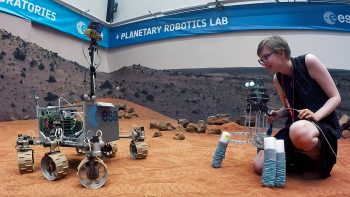
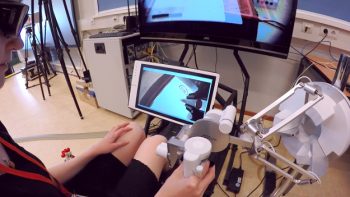
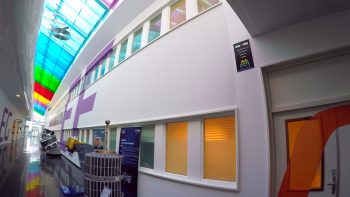
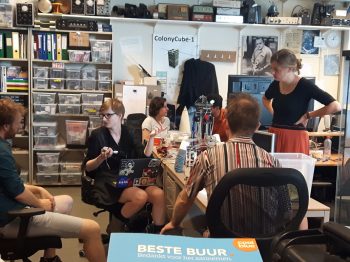
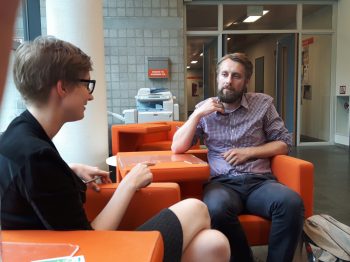
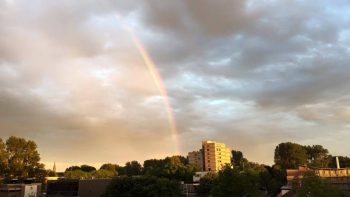
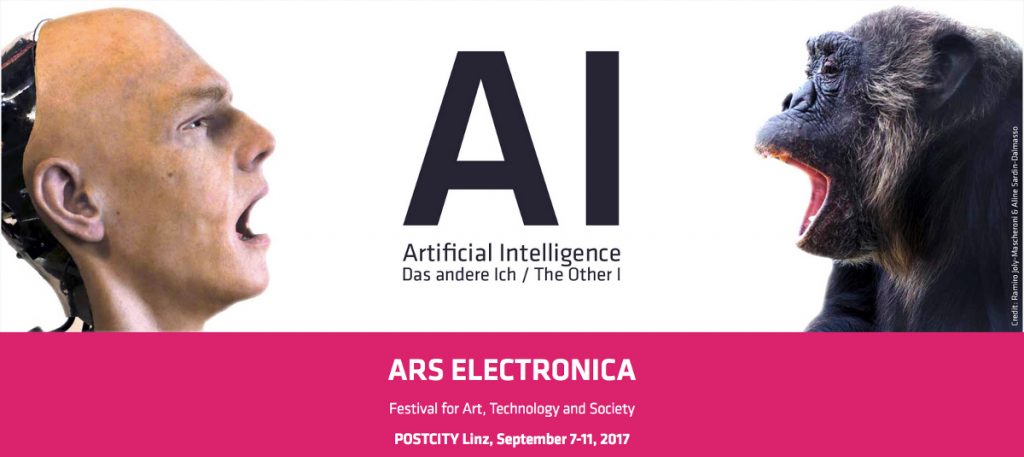
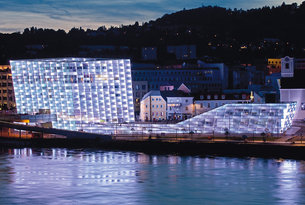

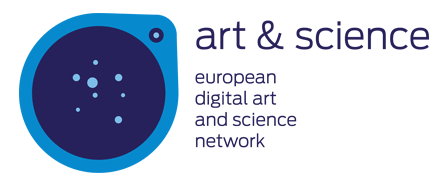
Discussion: no comments